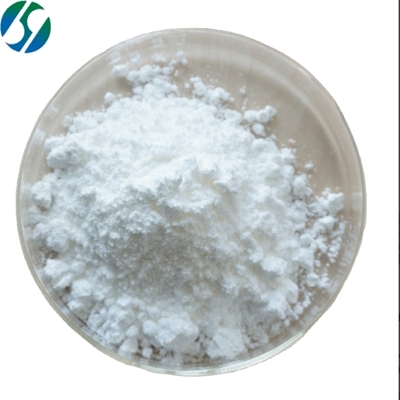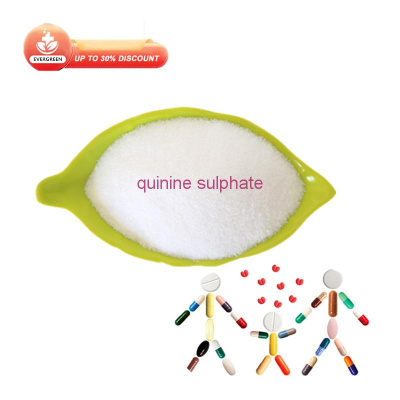-
Categories
-
Pharmaceutical Intermediates
-
Active Pharmaceutical Ingredients
-
Food Additives
- Industrial Coatings
- Agrochemicals
- Dyes and Pigments
- Surfactant
- Flavors and Fragrances
- Chemical Reagents
- Catalyst and Auxiliary
- Natural Products
- Inorganic Chemistry
-
Organic Chemistry
-
Biochemical Engineering
- Analytical Chemistry
- Cosmetic Ingredient
-
Pharmaceutical Intermediates
Promotion
ECHEMI Mall
Wholesale
Weekly Price
Exhibition
News
-
Trade Service
The redraphylidon unlocks the "heart" skill, the REWIND study is written in China, providing the only evidence of first- and second-degree prevention of cardiovascular disease in type 2 diabetesBottom gas foot wide benefit:REWIND research writing progress glucantide china specification
Lilly China announced on June 1, its glucagon-like peptide-1 receptor agonist (GLP-1 RA) weekly preparation degree latone peptide specification update recently approved by the State Drug Administration (NMPA)This specification update is based on the results of the REWIND study (The Cardiovascular Outcome Study of Lollygypeptides)THE REWIND STUDY, WRITTEN IN THE CHINESE SPECIFICATION OF LATIN, PROVIDES CLINICAL EVIDENCE FOR THE REDUCTION OF MAJOR ADVERSE CARDIOVASCULAR EVENTS (MACE) IN ADULTS WITH TYPE 2 DIABETES (T2DM) WHO HAVE BEEN DIAGNOSED WITH CARDIOVASCULAR DISEASE (CVD) OR COMBINED WITH MULTIPLE CARDIOVASCULAR RISK FACTORSThis updated approval makes polyglycin the only sugar-reducing drug currently available for primary prevention and second-level prevention in Patients with T2DM to reduce the risk of major cardiovascular eventsSo, why can the peptide rewrite the Chinese manual with REWIND research? At the same time, what is the reason why the guidelines for diabetes have been updated so much as to the REWIND study? Explain the three characteristics of REWIND research, you know why it is full of gas!Baseline population characteristics: CVOT can also be followed by "realistic"Cardiovascular OutcomeS Trial (CVOT) as a randomized controlled study (RCT), the subject sittered with the inclusion/exclusion criteria 1,2In the previous GLP-1 RA CVOT, the majority of the subjects included were combined with confirmed cardiovascular disease (CVD) 3,4,5In contrast, only 31 percent of the subjects in the REWIND study combined confirmed CVD at baseline, and most of the patients had not been diagnosed with CVD, with only high risk factor6, and were included in the population's real situation closer to clinical practicesecond, the study also had the lowest hbA1c baseline median (7.2%) of the lowest sugar-lowering drug CVOT to date, suggesting that the cardiovascular benefits of polyglycine may be independent of the effects of sugar-loweringIt's full! The only excellent design is trueCVOT statistics are mainly driven by MACE events, and the preset boundary value (i.ethe 95% CI upper bound) is an important factor in the number of preset events, thus determining the final sample sizeThe degree of risk and follow-up time of cardiovascular events in the included patients were both important factors in reaching the number of preset eventsUnder the typical CVOT setting, the number of events required for the optimal ity study is greater than that of the non-effect studyIn the now-published GLP-1 RA CVOT, the REWIND study was the only test that crossed the line with a non-disadvantage, pre-set statistical lys (1.0), demonstrating the researchers' confidence in the cardiovascular benefits of diglytideTo unlock the "heart" skills
people with diabetes have a higher risk of developing CVD, 2 to 4 times more likely than non-diabetic patientsAt the same time, hypertension and lipid disorders, obesity, etcare cardiovascular risk factors for diabetic patients8The treatment strategy for diabetes has also shifted from "controlling blood sugar" to focusing on "improving cardiovascular and fatal outcomes"ReWIND studies have shown that polyglycincane can significantly reduce the risk of 3P-MACE in patients by 12% (HR -0.88, 95% CI: 0.79-0.99, P-0.026)6Whether the patient is a combined confirmed CVD, or a combined cardiovascular risk factor, diglyphypeptides can bring consistent 3P-MACE benefits to patients6, providing for the first time in T2DM patients GLP-1 RA in CVD level 1 and secondary preventive evidenceFrom the combination of risk factors to the confirmed CVD, diglygyrepeptides protect the health of Patients with T2DM throughout the occurrence and development of vascular complicationsin addition,, the low annual incidence of end-of-term events in the REWIND study demonstrated that the risk of CVD in the population was lower, the longer the required number of events was required, and the median follow-up time was 5.4 years6, which also provided the basis for the long-term safety of the validation of glycopeptidesStrong evidence, strong courage:REWIND study was quickly cited by major guidelines
before the RELEASE of the REWIND study, the 2018 American Diabetes Association (ADA)/European Association for Diabetes Research (EASD) guidelines, the 2019 ADA guidelines clearly indicate that GLP-1 RA only in combined atherosclerosis cardiovascular disease (ASDCV) T2DM patients have not been observed cardiovascular benefits, no It is therefore recommended to select GLP-1 RA10,11 with cardiovascular benefits in patients with combined ASCVD T2DMAfter the RELEASE of the REWIND findings, GLP-1 RA recommended an expanded range of people - 2019 ADA/EASD, 2020 ADA, 2020 ADA, and 2020 guidelines published by the American Society of Clinical Endocrinologists (AACE)/American Endocrinologist (ACE) to use GLP-1 RA2 13, 13, 14 in patients with combined CVAS or T2DM combined cardiovascular risk factors The Chinese Expert Recommendations for the Clinical Application of New Anti-Hypertension Drugs to Improve Cardiovascular and Kidney Outcomes, published in the March 2020 Issue of the China Circulation Journal, also recommends that for patients with combined ASCVD or with high risk factors of ASCVD, the sugar-lowering drug preferred GLP-1 RA, such as latretide 15 At the same time, the latest June Chinese Medical Association Diabetes Credit Association (CDS) and the Chinese Medical Association Endocrinology Credit (CSE) jointly published the "Chinese adult type 2 diabetes combined heart and kidney disease patients with sugar reduction drug clinical application expert consensus" also T2DM combined ASCVD or cardiovascular risk of high-risk patients using GLP-1 RAI recommendation 16 As a result, GLP-RA has become a sugar-reducing drug on the front line because of its excellent experimental design and strong evidence, reWIND's findings were quickly cited by major guidelines/consensus recommendations as soon as they were published (Figure 1) Figure 1 REWIND research was cited by foreign guidelines/consensus
expert review this, Professor Ma Yiming said: Through the REWIND study, we also see the difference between different diabetes treatment drugs CVOT research The REWIND study confirms that "people with type 2 diabetes, whether or not they have been diagnosed with cardiovascular disease, can benefit from the treatment of leachate peptides to significantly reduce their cardiovascular events, for the first time in diabetes practice." At the same time, the weekly treatment of polyglycine helps patients achieve HbA1c compliance and delay the occurrence and development of cardiovascular events References: Chen Yonglian, Tong Nanwei, China Diabetes Journal, 2019, 11 (12): 828-832.
Sun Xin, et al., China Evidence-Based Medicine, 2017, 017 (002): 126-130.
Marso S P , et al New England Journal of Medicine, 2016, 375 (19): 1834-1844.
Holman RR, et al N Engl J Med, 2017, 377 (13): 1228-39.
Marso S P , et al New England Journal of Medicine, 2016, 375:311-22.
Aroca Mart?nez Gustavo The Lancet, pii: S0140-6736 (19) 31149-3.
Hanefeld M, et al Diabetes Ther, 2016, 7 (2):187-201.
Jia Weiping, et al China Diabetes Journal 2018;10 (1): 4-67.
Guillaume China Diabetes Journal, 2017, 25 (11): 961-969.
American Diabetes Association Diabetes Care, 2019, 42 (Suppl.1): S1-S193.
Melanie J Davies, et al Diabetes Care, 2018, 41 (12):2669-2701.
American Diabetes Association Diabetes Care 2020;43 (Suppl 1):S1-S212.
John B Buse, et al Diabet 2020, 63 (2):221-228.
Alan J Garber, et al Endocr Pract 2020, 26 (1):107-139.
Chinese Expert Recommendations on the Clinical Application of New Antihyperglycemia Drugs to Improve Cardiovascular and Kidney Outcomes China Circulation Journal, 2020, 35 (3):231-238.
Chinese Medical Association Diabetes Credit Association, Chinese Medical Association Endocrinology Society, Chinese Diabetes Journal, 2020, 1-17







